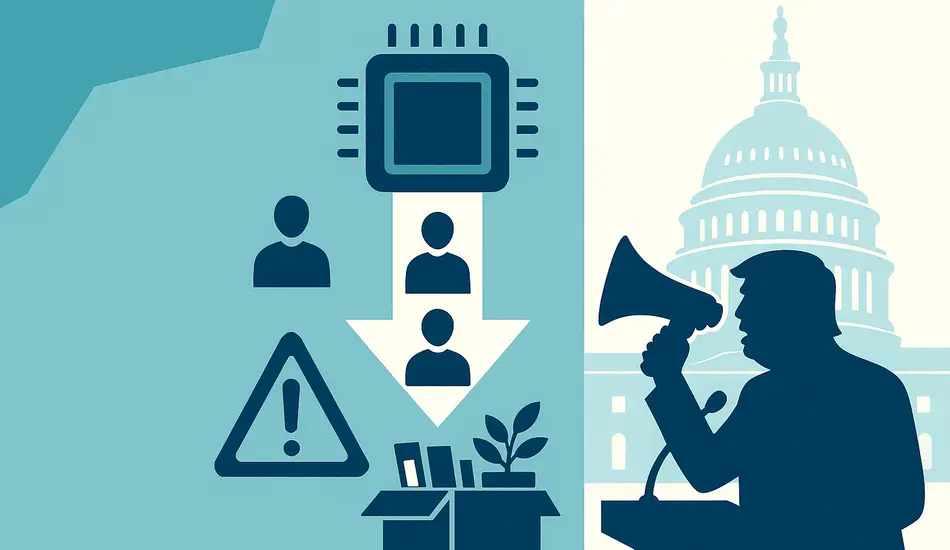Intel’s troubles deepened this week as the company navigates mass layoffs, executive scrutiny, and now a public rebuke from President Donald Trump. The president’s latest comments have thrown uncertainty over the leadership of a CEO who has been in the role for less than six months.
Trump Targets Intel CEO Over China Links
Early Thursday morning, President Trump took to Truth Social to demand that Intel CEO Li Tan step down, citing “business ties with Chinese companies.” The post sent ripples through the semiconductor industry and financial markets, raising questions about the future of one of America’s most iconic tech firms.
Industry analysts point out that Li’s connections to Chinese companies are not new. Stacey Raskin, who covers the semiconductor sector for Bernstein Research, noted that Li co-founded a venture capital firm decades ago that worked with Chinese technology startups. While the activities were well known in the industry, Trump’s statement brings them into the political spotlight.
“This is a sensitive moment,” said Raskin. “Intel was already in a difficult position when Tan took over. Even if his turnaround strategy works, it’s going to be a long, challenging process.”
Mass Layoffs in Oregon Add to the Pressure
The controversy follows Intel’s mid-July announcement that it would cut more than 2,300 jobs across its Oregon campuses. The layoffs came just four months after Li assumed the CEO role in March. For a company long considered a cornerstone of the U.S. semiconductor supply chain, the decision signaled deep operational and market pressures.
Intel has struggled in recent years to keep pace with competitors like Taiwan Semiconductor Manufacturing Company (TSMC) and Samsung in advanced chip manufacturing. Its recent cost-cutting measures, including workforce reductions, are part of a broader effort to stabilize finances and regain technological leadership.
“There’s the hope that the pain Intel is going through now will lead to better results in the future,” Raskin said. “But with this new political pressure, the company’s strategic path forward is far from clear.”
Economic Impact on Oregon and Beyond
Despite the job cuts, Intel remains a major economic engine in Oregon. The company employs thousands in the state and is a critical contributor to the local tax base. Business leaders in the region remain cautiously optimistic.
“We have to give Intel time to implement its changes and continue to have confidence in its long-term role here,” said the executive director of the West Side Economic Alliance. “They’re still a major part of our regional economy.”
However, the combination of workforce reductions and public political attacks adds uncertainty for local communities dependent on Intel’s economic footprint.
Intel Faces Layoffs and CEO Pressure
Presidential criticism over China ties adds to the company’s challenges
Post a Job Now →Intel’s Response
In a statement issued Thursday, Intel defended both its CEO and its corporate mission. “Intel and Mr. Tan are deeply committed to the national security of the United States and to the integrity of our role in the U.S. defense ecosystem,” the company said.
Despite the statement, the company’s stock dropped 3% by market close, reflecting investor concerns about political risk, leadership stability, and ongoing operational challenges.
What Comes Next for Intel
The next few months could be pivotal for Intel’s future. Analysts expect continued scrutiny of Li’s leadership and potential congressional interest in the company’s China relationships. With the U.S. ramping up its domestic semiconductor manufacturing push under the CHIPS and Science Act, Intel’s role as both a commercial and strategic national asset will remain under the microscope.
Whether the current turbulence will derail Li’s turnaround strategy—or accelerate it—remains an open question. For now, Intel faces the dual challenge of restructuring internally while navigating a politically charged external environment.
FAQs
1. Why is President Trump calling for Intel’s CEO to step down?
Trump cited Li Tan’s past business ties with Chinese companies through a venture capital firm he co-founded decades ago. While the connections are widely known in the industry, Trump’s public statement has brought them into political focus.
2. How many jobs has Intel cut in 2025?
In July, Intel announced more than 2,300 layoffs across its Oregon campuses. These cuts are part of a broader restructuring aimed at reducing costs and streamlining operations.
3. How significant is Intel to Oregon’s economy?
Intel is one of Oregon’s largest private employers and a key contributor to the state’s GDP and tax revenue. The company’s presence supports thousands of direct and indirect jobs in the region.
4. How has Intel responded to the controversy?
Intel issued a statement reaffirming its commitment to U.S. national security and its role in the defense ecosystem. The company defended CEO Li Tan’s leadership while acknowledging ongoing operational changes.




